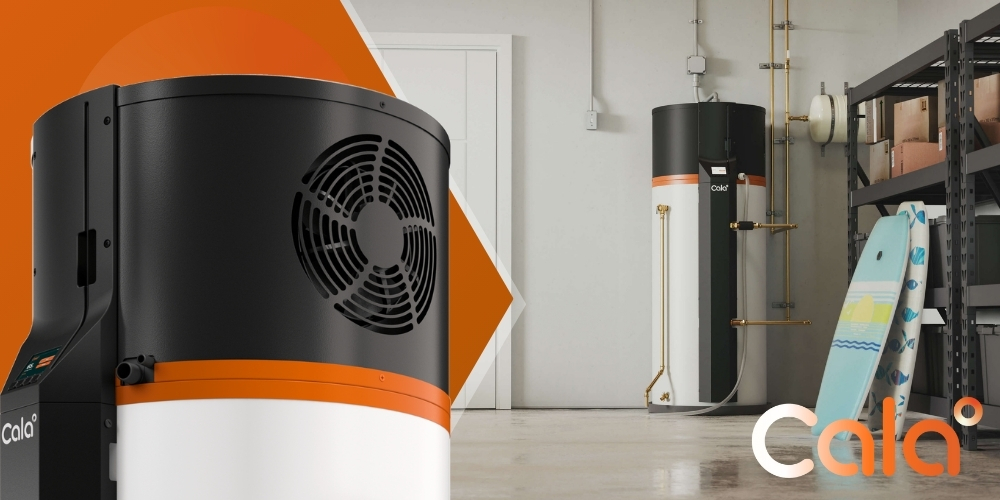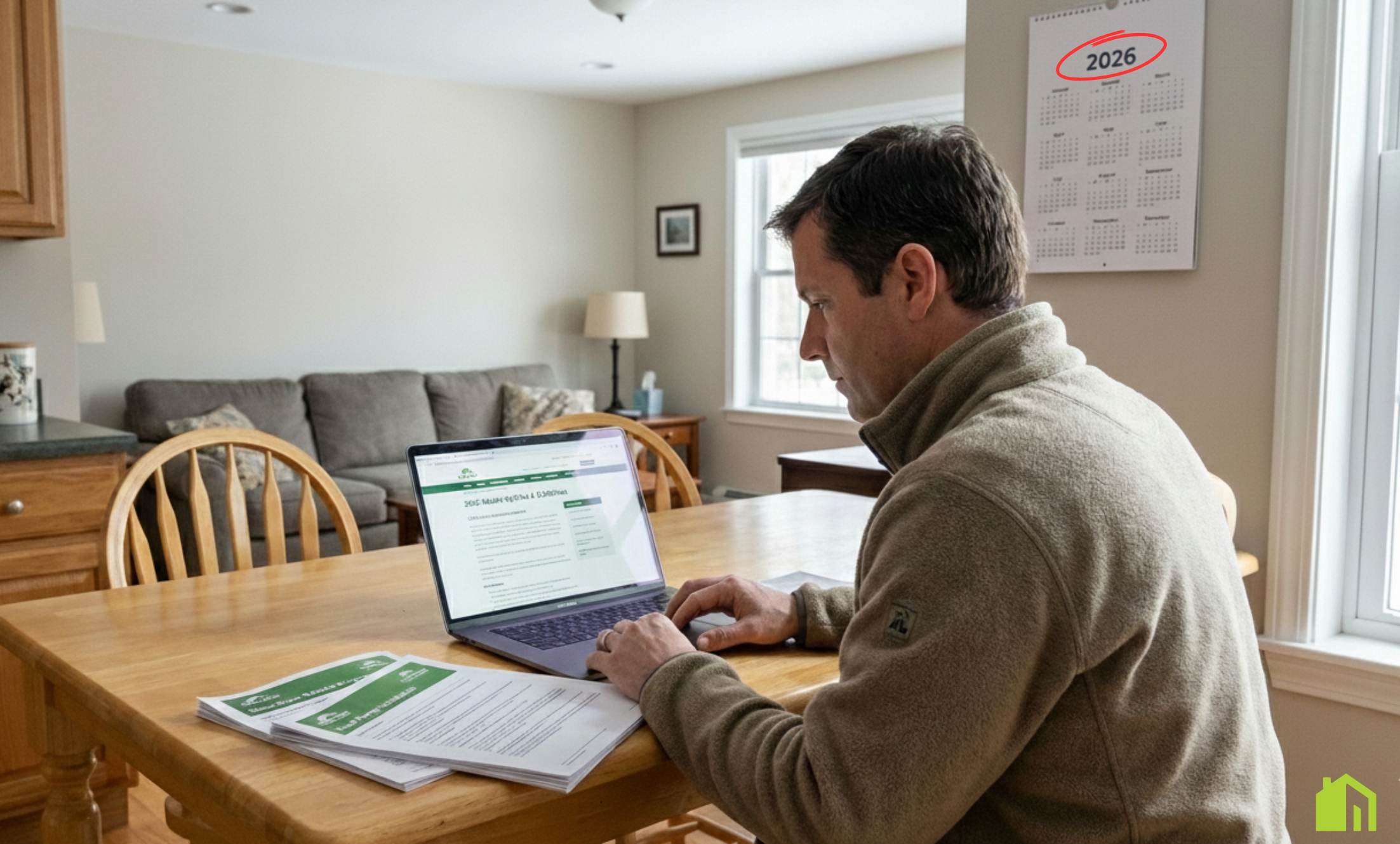Where Should You Install Carbon Monoxide Detectors in Your Home?

Intelligent Heat Pump Water Heaters for Massachusetts Residential Homes — Why SumZero Selects Cala
By SumZero Energy Systems — Massachusetts’ #1 Heat Pump Installation Team
Picking a new water heater once involved a simple decision between gas and standard old electric, praying the hot water wouldn't be gone when there were two showers in a row. That's no longer the case. Now, the ideal solution for the majority of Massachusetts homes is a smart heat pump water heater (HPWH). This isn't the typical hybrid of which you might have heard, but a rather new breed of unit that adapts to your home's schedule, accommodates your energy usage, and maintains comfort consistently while consuming a lot less energy.
When homeowners want to have it exactly right the first time, our team is discerning about what products we choose. We consider the landscape and inspect the details before determining that they might work with Cala, a company that produces a high-technology hot water heater that modern homes need: intelligent, consistent, and efficient hot water — installed properly. This article describes why this alliance matters, how the tech benefits your home, what you should expect from our installation, and the handy information (rebates, credits, fit questions) homeowners inquire about daily.
Why This Alliance Is Important
(and What It Does for You)
There are two parts to a successful hot water solution:
Great technology
A system that makes you comfortable and uses less energy.
Great installation
Design, placement, airflow, electrical, condensate handling, commissioning, and long-term support.
Cala provides a tailor-built, smart HPWH platform. SumZero provides actual-world experience so that it works perfectly in real Massachusetts homes.
Together, we provide three things homeowners report wanting:
Accurate hot water at peak periods without guessing.
Cheaper monthly energy bills without compromise on comfort.
It is a future-proof solution that addresses the trend towards greener, all-electric homes.
Simply put: We get hot water. We know how to properly install heat pump technology. This combination makes a water heater upgrade a smart, long-term decision.
The Homeowner's Dilemma That We Are
If you have had a gas or a typical electric water heater, then you know the problems:
Hot-cold swings on hectic morning routines.
Higher electricity bills than hoped for.
No real insight, no real control.
A replace cycle that is experienced as "buying the same thing again."
Typical hybrid: Heat pump water heaters perform better, yet they still react: They delay until the tank cools off, then warm it up again. Homeowners averred they desire a system which thinks ahead—a unit which is a breeze to operate, handles peak load graciously, and does not make them compromise.
They fill that gap, which is why we work with them.

Why a Smart HPWH is Different
A standard electric water heater makes heat by passing an electric element, a giant toaster coil, through the tank. A heat pump water heater does it another way: it takes heat from the air it lives in and puts it into the water. Because it costs less energy to move heat than create it, heat pump water heaters run on much less power than typical electric ones. And they avoid burning gas, venting, and pollution.
A smart HPWH goes one step further:
It adapts to your home's schedule (morning showers, nighttime laundry) and preheats when demand isn't yet high.
You can use the app to check, plan, or increase hot water whenever you want.
It has a compressor that can change speed to fit what you need (not just "on/off").
It is achievable with a mixing valve holding water at the proper warmth for improved efficiency and then providing a sustained, safe warmth for usage. This is also possible with the availability of additional warm water at peak usage times.
It goes nicely with a contemporary home — primed for solar, time-of-use, and information you can view at a glance.
Result: more stable comfort, less energy use, improved control.
Why a Smart HPWH is Different
From what is visible on-site, there are three things certain for homeowners regarding the points of Cala:
1) Ease That Is Effortless
Consistent hot water at peak use is the ultimate test. Through forecasting demand and using a mixing valve, Cala maintains a steady supply. That results in less "uh oh" when two showers coincidentally happen at once or someone turns on the dishwasher.
2) Controls That You'll Ever Use
App functionality is key when done properly. You can check if there's hot water, turn up the heat for guests, view energy usage history, or simply set it and leave. As installers, we appreciate performance data — it allows us to address little issues before large ones form.
3) Future-Ready from Day One
Massachusetts is going towards clean, electricity-based homes. Cala's strategy combines well: it is scalable for solar power and accounts for time-of-use rates when needed. If you foresee solar energy at some time, or already have it, this water heater won't stop your home from being efficient.
4) A Company That Stands Behind Its Product
Cala backs every unit with a 10-year parts warranty and 3-year labor warranty — a strong sign they stand behind both the technology and the people who install it. At SumZero, we respect that kind of commitment because it mirrors our own approach: taking care of homeowners and supporting our partners with the same level of trust and accountability.
What SumZero Offers As Your Installer
(Why It Matters)
Even the best system won't work so great if installed wrong. Our task is getting your new HPWH working perfectly inside your home, not on a drawing board. This is what our approach is:
Right-size design.
We measure how much water your home needs and discuss the high-flow fixtures, filling bathtubs, and washer usage.
Best installation and ventilation.
HPWHs require air to make the heat move. We consider the room size, doors, vents, and — when necessary — ducting solutions for high performance and low noise.
Clean handling of electricity and condensate.
Safe power, tidy routing, and a trustworthy drainage plan are essential.
Commissioning correctly.
We don't just "turn it on." We verify performance, position the mixing valve, help you with the app, and verify your comfort objectives.
Rebates, credits, and financial assistance.
Mass Save, federal 25C, and the 0% HEAT Loan (if applicable) — we'll help you with that.
We take special care.
Our teams respect your home, protect your floors, and leave the place nicer than they found it.
Aftercare you can count on. Questions years down the road? We're here. The whole concept of a smart system is long-term confidence, not a one-day installation.
Costs, Incentives, and Lifetime Value
Two parts matter here: upfront cost and operating cost.
→ It is a better unit than a standard electric or simple hybrid. Tax credits and rebates make a big difference. A lot of Massachusetts homeowners rely on the 0% HEAT Loan for easier payments.
→ Month after month, the intelligent HPWH's effectiveness is where the value lies. By transferring (not creating) heat and by scheduling heating intelligently, homeowners consistently experience significant decreases in water-heating energy consumption — particularly relative to resistance electric, and many times relative to gas or delivered fuels when full costs are factors.
If you'd like figures specific to your home (household number, showering usage, energy costs), we'll do the math at your consult and provide you with a clear estimate of payback, lifetime cost saving, and the rebates for which you qualify.
Are Smarter Heat Pump Water Heaters Good for Your Home?
It is feasible for many Massachusetts homes. We will cover:
→ Household size and routines. Families with up to about 5 people usually do well with the standard setup; we will give advice for larger families or special situations.
→ Space and ventilation. We check the space, door vents, or ducts if necessary, and ventilation so the system operates properly.
→ Location. Basements are typical, as are utility rooms. As the unit functions, it removes air that feels like a dehumidifier — a typical plus for basements.
→ Electrical. We check panel capacity and proper wiring; no installation day surprises.
→ Future plans. Now or in the future for solar? Time-of-use rates? We'll put the system on so it grows with your home.
[[cta-heatpump]]
Why Is Cala Different from "Traditional Hybrids"?
✪ Control and Convenience:
Cala integrates intelligent tech with a mixing valve to remain comfortable, even when it is busy. Most standard hybrid units have simple modes and react only when the tank becomes chilled.
✪ Care and Trust:
Performance insights help you recognize problems early on and keep you on your feet for surprises. Traditional deployments are mostly "wait and see."
✪ Timing and Efficiency:
Variable driving and improved scheduling assist in energy saving with the maintenance of comfort. Ordinary hybrids operate more often and at undesirable times.
✪ Future-Ready
The design of the Cala accommodates with solar power, intelligent homes, and plans for utilizing electricity. Most older hybrids were not built for that usage.

What to Expect with SumZero
(From the First Call Through the First Shower)
✪ Talk & Pictures
We'll first glance at your objectives and take some fast photos of the current installation: the water heating unit, panel, and surrounding room.
✪ Right-Fit Design
We fit your hot water consumption and available spaces to a design which we endorse.
✪ Chaplain: A Comprehensive
Your quote is going to be transparent, includes information for installation, accessories, and a checklist for incentives. The paperwork assistance takes care of our end.
✪ Professional Installation
Licensed, insured, and detail-orientated. We dispose of the old unit, prepare the site, install and commission a new system, and leave the site tidy.
✪ App Introduction and Instructions
You'll discover how to see hot water supply, schedule increases, and view consumption — without being "technical."
✪ Support and Help
We're your long-term partner. Got a question? You call us — that's what homeowners deserve from the #1 heat pump installation company.
Common Questions We Get
(And Easy Answers)
Smart heat pump water heaters move heat from the surrounding air into the water instead of generating heat directly. This makes them up to three to four times more efficient than standard electric models. Cala’s intelligent system takes it further — it learns your household’s patterns, preheats before busy periods, and gives you app-based control to monitor or boost hot water anytime.
Most hybrid water heaters react when the tank cools. Cala predicts when your home will need hot water and heats proactively, saving more energy while maintaining comfort. It also features a variable-speed compressor, integrated mixing valve, and performance monitoring portal, giving both homeowners and installers a smarter, more reliable experience.
Savings depend on your energy source and usage, but many Massachusetts homeowners cut their water-heating costs by 50–70% when switching to a heat pump system. Cala’s intelligent controls add even greater efficiency. Add Mass Save® rebates, federal 25C tax credits, and potential 0% HEAT Loan financing, and most families see real payback within just a few years.
Yes — most Massachusetts homes are a great fit. Cala’s 65-gallon design comfortably serves households up to five people and can prepare up to 90 gallons ahead of peak use. The system needs adequate space and airflow, similar to a dehumidifier, and our team at SumZero handles every detail — from placement and ducting to electrical and performance checks.
SumZero Energy Systems is Massachusetts’ #1 heat pump installation team, trusted for precision, transparency, and high-quality service. We manage every step — design, installation, rebate paperwork, app setup, and long-term maintenance — so homeowners enjoy smarter comfort and lasting confidence. With SumZero, you’re not just buying equipment; you’re gaining a partner who stands behind it.
Why We Feel Secure Recommending This to Massachusetts Homeowners
We have a simple promise: we only install solutions that we would use in our own homes. Cala’s approach — being smart, having control, and being ready for the future — matches what we have learned from many talks with homeowners in the state. Together with SumZero’s careful installation standards and ongoing support, this water-heating upgrade makes sense right away and will last well with your home. Cleaner heat. Smarter comfort. Fewer bills.
Ready to Take the Next Step?

To learn more about Cala’s technology and vision, visit Cala Systems.
Why Carbon Monoxide Detector Installation Matters More Than You Think
Massachusetts homeowners know how important it is to keep their homes safe, especially during long heating seasons. One of the most overlooked—but absolutely critical—components of home safety is carbon monoxide detector installation. Carbon monoxide (CO) is a colorless, odorless gas that can be deadly when inhaled in high doses. With so many homes relying on gas, oil, or wood-burning heating systems, the risk is very real.
Many Massachusetts homes rely on fuel-burning appliances, making CO detectors not just helpful, but essential for year-round safety.
Placing these devices correctly isn't just a guideline—it's a life-saving decision. Let's walk through the smart, reliable ways to install them so your family stays protected.
The Dangers of Poor Placement
Putting CO detectors in the wrong spots can mean the difference between early detection and a dangerous, unnoticed buildup. Common mistakes include installing too close to fuel-burning appliances or placing them in overly humid areas like bathrooms. Understanding where they work best is the first step toward reliable protection.
Understanding Massachusetts Safety Codes
Massachusetts law requires CO detectors in residential buildings with fuel-burning equipment or enclosed garages. These must be installed on every habitable level of the home and within ten feet of all bedroom doors. Knowing this, we can plan the ideal installation setup for your property.
Best Locations for Carbon Monoxide Detector Installation
Positioning your CO detectors properly brings peace of mind and ensures you're meeting both state regulations and real-life safety needs. Here's how to make informed decisions about placement throughout your home.
Bedrooms and Sleeping Areas: Your First Line of Defense
Your top priority should be areas where your family sleeps: nights are when you're most vulnerable.
- Install a detector within 10 feet of all bedroom doors
- Make sure it’s at least 15 inches from the ceiling if not ceiling-mounted
- Avoid placing directly beside windows or near vents where airflow might interfere
Placing CO detectors near sleeping areas helps catch early traces of carbon monoxide while everyone’s asleep and most at risk.
Living Rooms and Common Spaces
Think of any space where the family spends regular, extended time—especially if there are fireplaces or entertainment systems using gas.
- Mount on the wall about head-height or higher
- Keep units away from large electronics that could disrupt readings
- Ensure smoke and CO detectors aren’t placed too close together, as they may interfere
Near Any Attached Garage
Cars warming up in the winter can fill your home with CO quickly—often before you even realize it.
- Install a CO detector near the entry from the garage to the house
- Choose a location close to the ceiling, where warm air and gases rise
- Avoid corners that trap air and reduce detector sensitivity
One running car in an attached garage can create deadly carbon monoxide levels in less than 10 minutes—even if the garage door is open.
[[cta-heatpump]]
Choosing and Replacing Carbon Monoxide Detectors
Even if you've placed detectors in the right spots, outdated or malfunctioning units won’t protect you. That’s why carbon monoxide detector replacement plays just as important a role as original installation.
When and How to Replace Detectors
Most CO detectors have a lifespan of about 5 to 7 years. After that, their sensors may stop working reliably—even if the alarm hasn’t gone off.
Here’s how to know it’s time for replacement:
- Check the manufacturer’s label for the expiration date
- Replace immediately if you notice frequent false alarms or battery issues
- Consider upgrading to newer models with built-in indicators or voice alerts
Remember to write the install date inside the unit for easy tracking.
Upgrade to Smart CO Detectors for Better Monitoring
If you’re looking for more peace of mind and easier maintenance, smart CO detectors are a solid investment. They connect to your phone or smart home system and send alerts instantly if something’s wrong—even when you're not home.
Benefits of upgrading to a smart unit:
- Get phone alerts for high CO readings or low batteries
- Easier monitoring for vacation homes or rental properties
- Some even detect smoke and humidity for added safety
Smart CO detectors can reduce emergency response time by alerting homeowners in real-time, even when they’re away.
Maintenance Tips to Keep Alarms Ready
To avoid signal failure or delayed detection when you need it most, keep your units in top shape with regular maintenance:
- Test detectors monthly using the built-in test button
- Clean the unit gently with a dry cloth every 6 months—never spray cleaners
- Replace batteries at least once per year unless using sealed battery units
A little upkeep goes a long way in keeping your family safe.
How CO Detector Services Can Help Massachusetts Homes
Massachusetts weather puts heating systems under a lot of pressure, and constant system use increases the risks associated with CO leaks. Regular evaluations from reputable co detector services can ensure your detectors are functioning properly and placed where they will provide maximum coverage.
What to Expect from Reliable CO Detector Services
Whether installing a brand-new unit or evaluating your current setup, a trusted CO service should:
- Offer detection planning based on your home’s layout
- Provide compliant detector placement with Massachusetts fire codes
- Test each unit after installation to ensure proper function
These services keep you compliant, safe, and give you confidence that your system will respond when it’s needed most.
The Added Value of Whole-Home Safety Planning
Some CO detector services don’t just look at one device—they evaluate your entire house for safety improvements. This can include:
- Suggestions for air flow improvements
- Advice on upgrading from plugin to wall-mounted units
- Recommendations on zones most vulnerable during heating season
To learn more about residential safety recommendations and carbon monoxide awareness, visit the EPA’s carbon monoxide guide.
In homes with proper detector placement and regular maintenance, incidents of CO poisoning are reduced by more than 90%, according to public safety data.
By understanding where to place your detectors, when to replace them, and how to upgrade when needed, you’re taking a smart and proactive approach to home safety. Equipping your home with working carbon monoxide detectors isn’t just meeting state law—it’s one of the most important ways to protect your loved ones all year long.
Ensure your family’s safety with expert carbon monoxide detector installation tailored to your home—code-compliant, correctly placed, and ready when it matters most.
Install CO Detector NowYou Might Also Like…
Continue learning with handpicked articles that inform and inspire.
Not Sure Where to Start? We’ll Guide You
Let our experts design the right heating and cooling solution—customized for your comfort, your layout, and your energy goals. No pressure. Just clarity.
Request FREE ESTIMATE









